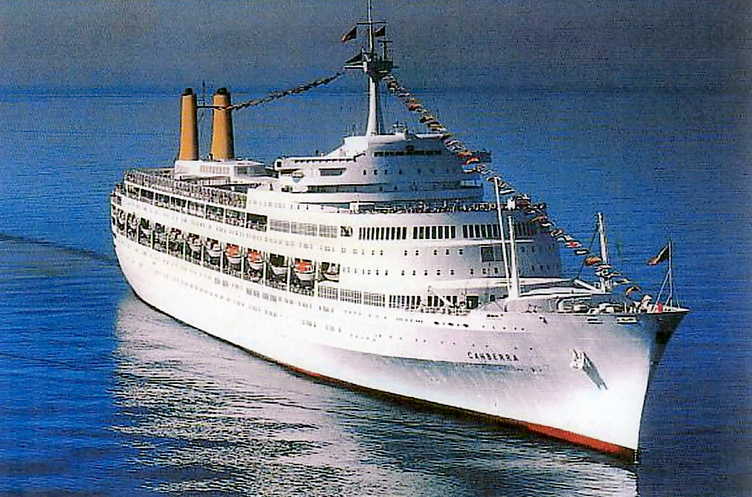|
Introducing
the Ocean Liner Story
|
|
|
 RETURN TO THE LOBBY THE OCEAN LINER VIRTUAL MUSEUM |
|
The passenger ocean liner is, without question, the greatest of all man-made construction, especially as exhibited at the peak of its development from the 1930s onwards. They were as large then as any skyscraper or any of the world’s greatest railway stations. But unlike these edifices, locked to the earth, static upon their foundations, the passenger ocean liners, fitted with machinery as large as that of any power station, were powerful, mobile monuments of man’s engineering prowess. Cleaving the waves at anything up to 30 knots, they were the leviathans and monarchs of the oceans, and truly were floating cities.
Of course other equally large ocean vessels have been built such as large crude oil supertankers and aircraft carriers to name just two. But none of these have incorporated the same level of complexity or ornamentation as that which is characteristic of the true ocean liner. Passengers as their “cargo”, required creature comforts, as far as possible, a real “home from home” which could delude them into feeling far removed from the ocean’s fury (only a hull’s thickness away), as if they were still on dry land. The same is true of today’s cruise ships although they are built more as holiday resorts and not for speed and a means of travel as the ocean liners were. In their heyday there was great rivalry between shipping lines, especially on the transatlantic route, as the liners were symbols of national prestige and you had to be the fastest and the best. It was the ocean liners and their scheduled liner routes linking Britain (and other ocean liner countries) with the diverse corners of the world that enabled people for the first time to travel long distances between continents on a regular basis. Thus the ocean liners enabled trade, communication and migration across the world and laid the foundations of the modern globalised world we live in today. This traffic has since been succeeded by the aeroplane and today’s airlines serve a similar role but in less time that the ocean liners and their shipping companies did before. Today, as communication improves via air travel and the internet, we live in an ever more globalised world. But the foundations of this modern, globalised world were laid by the ocean liners and their liner routes. Even today 90% of trade is by sea. Ever since the jet age arrived in the 1960s and 70s the ocean liner has declined as their scheduled passenger voyages were replaced by air travel. As a result they evolved into today’s cruise liners. Meanwhile their cargo operations were replaced by container ships as a result of the containerisation and intermodal transport revolution that changed the whole shape of the shipping industry. |